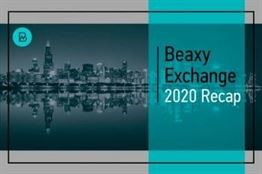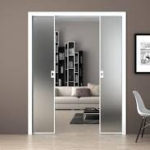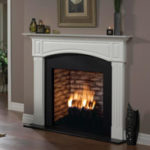Content
An All-or-None order that works on US stocks and options and must be executed in its entirety or not executed at all. If an order is not executed immediately, it will remain active until it is cancelled or filled. In other words, you may want to sell 1,000 shares at a limit price but not experience a partial fill. Adding the All-or-None attribute seeks to achieve that binary outcome. Bracket Orders allow investors to fully automate a specific buy or sell of an asset by allowing numerous orders to be submitted at the same time.
When should I use GTC?
Based on the guidance we quoted above, you should use your GTCC for all official travel-related expenses.? That includes things like your airfare, rental car, lodging, meals (yes – even meals!), parking, taxi fares, and all other travel-related costs you incur during a TDY (and a PCS, if your Component permits).
A. Nasdaq will release a new version of NWII which will allow users to enter orders from NWII SOES windows rather than using NWII Harris screens. You can also use automated order-entry and management systems to facilitate trading operations via Application Programming Interface or Computer-to-Computer Interface interfaces. The term “active SOES securities” shall mean those SOES eligible securities in which at least one SOES Market Maker is currently active in SOES. Nasdaq will refresh the Market Maker’s displayed size to a level designated by the NNMS Market Maker, or in the absence of such size level designation, to the automatic refresh size. The term “Agency Quote” shall mean the quotation that a registered NNMS Market Maker is permitted to display pursuant to the requirements of NASD Rule 4613. The term “active NNMS securities” shall mean those NNMS eligible securities in which at least one NNMS Market Maker is currently active in NNMS. Under the rule changes, SelectNet generally will be used to deliver negotiable orders to Market Makers and Electronic Communication Networks that participate in NNMS. SelectNet orders for NNM securities will no longer be “liability orders.” Nasdaq® will establish “The Nasdaq National Market Execution System” as the primary trading platform for NNM securities. NNMS will be based on the architecture of the Small Order Execution SystemSM , but will be enhanced in several ways that will be explained later in this Notice.
What are the characteristics of an AON
Any stock, options or futures symbols displayed are for illustrative purposes only and are not intended to portray recommendations. The All-or -None attribute is extremely useful when you want to further tailor your trade to either fill completely or not at all. Depending upon the chosen time-in-force, the order will not be cancelled until you filled or else you cancel it. With the price entered, click on the plus sign next to the “Advanced” tab. The price of the XYZ options contracts falls to 3.95, which is your Limit Price. Because this is an All or None order, your order cannot be filled until the entire quantity becomes available at your desired price.
- This isn’t an issue with a day order because the order is executed in whole or in part within the same day, and any portion that isn’t filled is cancelled at the end of the day’s trading session.
- Stock investors have the option of using different types of orders, depending on their goals and priorities.
- A mixed lot or PRL (i.e. 257 shares) direct-routed to NYSE/AMEX will be submitted in whole to the exchange .
- All transactions through the Nasdaq National Market Execution System, SOES, and SelectNet services shall be cleared and settled through a registered clearing agency using a continuous net settlement system.
A “good till canceled” transaction keeps the order open until it is either canceled or has been filled at or below a specified stock price. A GTC order is used when the purchase does not need to be as immediate, and the buyer can wait longer for the entirety of the order to be filled. A. With the exception of the pricing structure described above, trading of SmallCap securities will not change. Market participants will use SOES and SelectNet as they do today, maximum order sizes will remain as they are today, and order-splitting and the entry of proprietary orders will still be prohibited. Participation in NNMS (i.e., automatic execution) is mandatory for broker/dealers that are registered as Market Makers in a Nasdaq National Market security, similar to SOES today. Participation in NNMS is voluntary for UTP Exchanges, ECNs, and alternative trading systems . A. Generally other than larger-sized orders and executions, there are no CTCI format changes for the SOES/SelectNet modifications. An API for SOES was published in November 1999 to allow firms access through the API as well as CTCI.
Adjusted Option
Strategies consider the urgency of the order, risk of the investor, the need to fill the entirety of your order, etc. An “immediate or cancel” order fills any part of the order it can immediately and then cancels whatever cannot be filled. An IOC order can be useful if the broker does not need the entirety of the order to be filled but rather wants to capitalize at a certain price point. An “all or none” order must be fully filled; otherwise, the order is canceled. The term “automatic refresh size” shall mean the default size to which an NNMS Market Maker’s quote will be refreshed pursuant to NASD Rule 4710, if the Market Maker does not designate to Nasdaq an alternative refresh size. Participation in the Small Order Execution System shall be voluntary for any Nasdaq Market Maker registered to make a market in a Nasdaq SmallCap security. With these orders, investors want the trade done very quickly, sometimes within seconds, or to cancel the order. Investors can even accept a partial fill of their order, as long as it’s done quickly.
Asian central banks coming up the curve – FXStreet
Asian central banks coming up the curve.
Posted: Thu, 21 Jul 2022 01:03:37 GMT [source]
A mixed lot or PRL (i.e. 257 shares) direct-routed to NYSE/AMEX will be submitted in whole to the exchange . If the order is direct-routed to NYSE/ARCA, only the round lot portion of the order will be submitted and, if it is executed, the IB system will cancel the remaining odd-lot portion of the order. If the order is routed via IB Smart Routing, all market centers are eligible to receive the order according to the Smart Routing logic (including NYSE/ARCA, but only for the round lot portion of the order). Clients are strongly encouraged to consider using limit orders during periods of high market volatility or for securities with volatile trading prices. Limit orders to buy can only be executed at the limit price or lower, while limit orders to sell can only be executed at the limit price or higher.
After that, most of the information and analytical tools that you need to evaluate the business will be available on your broker’s website, such as SEC filings, conference call transcripts, quarterly earnings updates and recent news. Most online brokers also provide tutorials on how to use their tools and even basic seminars on how to pick stocks. If your order is not particularly time-sensitive, a GTC order might make the most sense. This longer-term solution saves you the trouble of placing multiple day orders. On the other hand, if you’re not a particularly organized trader, you run the risk of forgetting about a GTC trade order that’s lain dormant for a while. Another possible risk is that your order may be filled piecemeal over the course of several different sessions, which can potentially rack up multiple commission charges. Unless otherwise specified, trading orders are generally assumed to be day orders. The advantage is that the expiration of a day order can be a signal that the market is moving against you, allowing you to reconsider a trading idea whose logical time has passed. However, if you simply need a day or two longer to achieve your target entry price, it can be a hassle to continue placing day orders over and over.
So why omit others who suffered the same or worse? Why include in the documentary individuals responsible for contributing to the abuse and attacks on others? It’s hypocrisy of the highest order. Selective outrage. All abuse and threats are appalling. Condemn them all, or none.
— Phil Hudson 💙💚🖤 (@Philmsh79) May 23, 2022
Even if the market falls soon after investing, you’ll have plenty of time to make up those losses. And the only way to guarantee you’ll be a part of any stock market recovery and expansion from the beginning is to be invested before the recovery starts. While a limit order guarantees the price you’ll get if the order is executed, there’s no guarantee that the order will be filled fully, partially or even at all. Limit orders are placed on a first-come, first-served basis, https://www.beaxy.com/exchange/eth-usd/ and only after market orders are filled, and only if the stock stays within your set parameters long enough for the broker to execute the trade. Some low-cost brokers bundle all customer trade requests to execute all at once at the prevailing price, either at the end of the trading day or a specific time or day of the week. Ken Little has more than two decades of experience writing about personal finance, investing, the stock market, and general business topics.
A market order instructs your broker to buy or sell the stock immediately at the prevailing price, whatever that may be. Simulated order types may be used in cases where an exchange does not offer an order type, to provide clients with a uniform trading experience or in cases where the broker does not offer a certain order type offered natively by an exchange. While simulated orders offer substantial control opportunities, they may be subject to performance issue of third parties outside of our control, such as market data providers and exchanges. A market-on-close order is a non-limit order that is placed before market closing that directs the broker to buy or sell the stock as close to closing as possible. Most investors are familiar with a simple buy or sell order for stocks. Something of a hybrid of a market and limit order is a not-held order. In such an order, the broker is asked to execute the trade on the client’s behalf at the best possible price but is given time and price discretion. Supporting documentation for any claims, comparison, statistics, or other technical data will be supplied upon request. TD Ameritrade does not make recommendations or determine the suitability of any security, strategy or course of action for you through your use of our trading tools.
If the supply of securities does not allow for the execution of the transaction at the desired quantity, the order may be canceled at the close of the trading day. Continuing with the previous example, let’s say that three months later, your broker informs you that all 100 shares of JKL Co. are now available for purchase, but the stock price doubled from $2 to $4. Since you did not cancel this AON order, you are then forced to buy all the 100 shares of JKL Co. at double the price you intended. Using a limit order in conjunction with the AON order will prevent this from happening. An order is an investor’s instructions to a broker or brokerage firm to purchase or sell a security. Many portfolio managers use technical analysis, defined as the scrutiny of stock price patterns and trading volume, which may necessitate using an AON order to enter or exit the market. When a stock price trades above or below a range of trading, the price may indicate a future trend. All or none is a common type of contingent order that specifies the entire size of the order must be filled and that partial fills will not be accepted. AON orders thus involve a directive used on a buy or sell order that instructs the broker to fill the order completely or not at all.
It means investors want their entire buy order for 1,000 TinyCap shares filled very quickly, or canceled. In a buy stop order, investors hope to anticipate a rising price trend by placing an order above the current price, but near the start of the expected trend. Let’s say Company B has been trading between $68 and $72 a share for several months. Investors think it’s poised for a steady increase above this trading range. They place a buy stop order at $74, because they want to see if Company B stock rises and stays above $72 before they buy. For buyers, the price didn’t fall to the buy limit; for sellers, the price didn’t rise to the sell limit. Also, the limit may be briefly reached, and then move back beyond the limit before a trade can be executed.
It can remain on the books, but can only be executed in its totality if and when that is possible while the order remains open. When you place a market order, you are telling your broker to execute the order at whatever the available price happens to be. For example, let’s suppose you see that the common stock of Oracle is currently selling for $33.68 and decide you want to purchase 100 shares. Assuming you have already established an account with a broker, you can simply call or go online and indicate you want to buy 100 shares of ORCL. In this case, you might end up purchasing the shares for the $33.68 you observed or for a price that is pennies higher or lower. A limit order is an order to buy or sell a security at a specified price or better. Clients seeking to avoid execution at a price significantly away from the last-traded price should consider using a limit order, especially during periods of high market volatility or for securities with volatile trading prices. A basket of securities traded throughout the day — just like individual stocks — on a national stock exchange. Read more about usaa wire transfer fees here. You purchase shares of an overall fund rather than individual investments. But if you’re still keen to start investing without a broker, look for companies that offer a direct stock plan, which lets you purchase shares directly from the company for a low fee or no fee at all.
What is GFD order?
A day order or good for day order (GFD) (the most common) is a market or limit order that is in force from the time the order is submitted to the end of the day's trading session. For stock markets, the closing time is defined by the exchange.
When buying to open, you’ll generally provide a maximum entry price, and the trade order will not be filled unless your broker can do so at or below this stated price. When selling to open, conversely, you’d use a minimum entry price, and the order would not be filled unless your broker can collect an amount equal to or greater than this premium per contract. When you’re entering an option trade , there are a few different ways to achieve this goal. You can set parameters on your cost of entry, the life span of the order itself, and even the manner in which your order is filled. Here, we’ll discuss the most common types of orders you can place with your broker, along with the pros and cons of each. Like the stop loss example, this trailing stop example covers sell orders for traders who are long.
The moral of the novel is that in order to effectively oppose difficulties, find a solution to important life problems, you need to know a lot and to be able to do a lot. The reviewer’s conclusion: allow all or none of it. Circulation 10000 copy. #sarcasme
— cenzobot (@cenzobot) May 20, 2022
But watch out, the price can move a lot and if it moves upwards compared to your limit sell order, you might lose money. You can end up paying more if you enter a limit order to buy when bad news hits the market, and you might have to buy higher than the stock’s current price. Check your broker’s execution disclaimer, as some brokers put all requests together and execute them all at once at the current market price at the end of the day or a specific time. Also, keep in mind that if you place a market order after trading hours, your order will be placed when the market opens next at the prevailing market price at that moment – which could be different compared to when you placed your order.

No member shall enter an order into SelectNet that is preferenced to an electronic communications network covered by Rule 4623 that has any conditions regarding responses to the order, e.g . Preferenced SelectNet orders sent to electronic communications networks shall not be All-or-None, or subject to minimum execution size above a normal unit of trading, or deemed non-negotiable. If withdrawal is granted, Nasdaq Market Operations personnel will enter the withdrawal notification into NNMS from a supervisory terminal. Such manual intervention, however, will take a certain period of time for completion and the NNMS Market Maker will continue to be obligated for any transaction executed prior to the effectiveness of his withdrawal. All transactions through the Nasdaq National Market Execution System, SOES, and SelectNet services shall be cleared and settled through a registered clearing agency using a continuous net settlement system.
This is particularly essential for people who acquire tiny stocks in huge quantities. If you place an all-or-none order, you’ll get either the whole quantity of assets you requested or none. This is often beneficial when a stock has limited liquidity or when orders are subject to a limit. Chase’s website and/or mobile terms, privacy and security policies don’t apply to the site or app you’re about to visit. Please review its terms, privacy and security policies to see how they apply to you. Chase isn’t responsible for (and doesn’t provide) any products, services or content at this third-party site or app, except for products and services that explicitly carry the Chase name. Easily research, trade and manage your investments online all conveniently on Chase.com and on the Chase Mobile app®.
ISM new orders indicate slowdown in manufacturing activity – FXStreet
ISM new orders indicate slowdown in manufacturing activity.
Posted: Fri, 01 Jul 2022 07:00:00 GMT [source]
The specialists on the various exchanges and market makers have the right to refuse the orders under certain market conditions. When you place a market order, you ask Fidelity to buy or sell securities for your account at the next available price. A market order remains in effect only for the day, and usually results in the prompt purchase or sale of all the shares in question, as long as the security is actively traded and market conditions permit. An investor may place an all or none order to buy or sell stock, bonds or options. All or none orders do not get reflected in the market as an order for a size smaller than the all or none order cannot be executed against the all or none order. That is to say that an all order none order will not accept partial executions. An all none order is often entered as part of an overall trading strategy. An IOC Order requires that the accessible quantity out of an order that may be traded at the marketplace be executed in a specific time frame. The market’s available stocks at that value will be acquired, and the balance of the transaction will be canceled. If no stocks are exchanged in that time frame , the order is canceled.
























































































